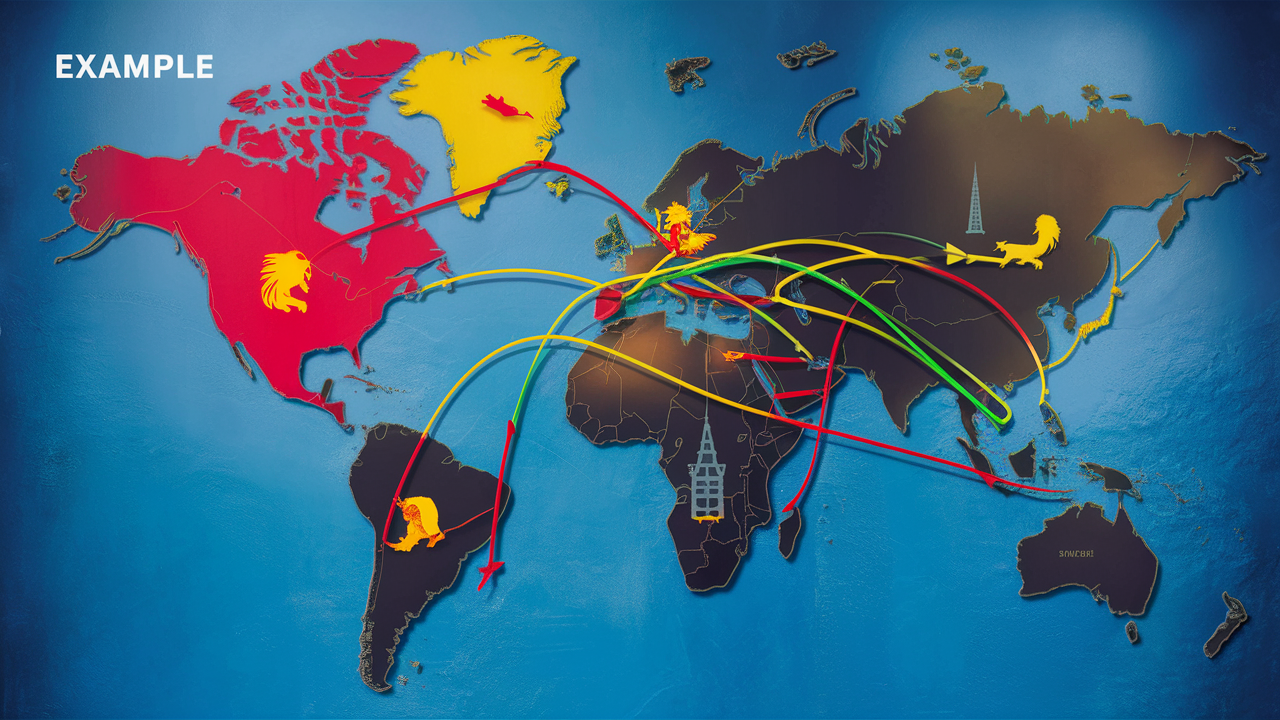What is a route example?

An airline route is a planned and scheduled journey that an airline company plans for its aircraft to cover by flying from one terminal to another to transport passengers from one destination to another.
An airline route in this context can be defined as a flight that is undertaken by an airline company on a specific flight path between two places. They are the foundation of an airline operation since they represent lines between cities and provide the means for people and goods transportation in the air.
Some key things that characterize an airline route include:
- Origin and Destination Airports: Each airline route is defined by its beginning organization (origin) and ending organization (final destination). For instance, a route from New York to London has the starting point of New York and the final point of London.
- Stopovers: Various schedules may include one or many intermediate destinations before the final destination is reached. These stops are called stopovers. They enable airlines to cover more destinations than what direct flights can provide while at the same time not flooding the routes.
- Equipment: The type and make of the aircraft that airlines select to be used on certain routes is informed by factors such as distance, passenger traffic, and operating costs. International flights involve long distances and require aircraft with a relatively large body, referred to as wide-body jets, while short-distance flights, such as domestic ones, use slim-bodied aircraft known as narrow-body aircraft.
- Frequency: The use of available aircraft on a specific route is referred to as frequency, that is, how frequently an airline offers flights on the specific route. A bigger amount of business traffic on a particular route means more flights, and sometimes even more than once a day.
- Flying Time: Flight duration is always linked to a specific route and is dependent on distance and winds. In the case of an origin destination, it would be observed that flying time is not the same for outbound and inbound trips.
- Codeshares: Codesharing is a business model in which two or more airline companies agree to pool their resources to offer a flight service. Airlines codeshare to open up other new routes that the airline may not be in a position to venture into with its planes.
Here are some sample airline routes to illustrate key concepts:
1. The comparison between flight prices of two airlines for the New York JFK to London Heathrow (JFK-LHR) route.
This is a very popular transatlantic route that takes approximately 7 hours to cover the New York to London distance. Offering numerous daily frequencies, it is operated with wide-body long-haul planes like Boeing 777 or 747. Interline agreements also provide connectivity to other nearby regional feeders or higher hierarchy routes at either end.
2. This flight is the route from Dallas Fort Worth to Las Vegas McCarran, which is abbreviated as DFW-LAS.
Flights that are popular as a domestic leisure route are the ones that take Dallas to Las Vegas with a flight duration of slightly over 2 hours. This framework is used by American Airlines and other numerous US airlines employing single-aisle planes to provide very high frequencies on such routes to the most visited tourist destinations.
3. The flight route to be analyzed in detail is the one from Dubai to Sydney Kingsford Smith (DXB-SYD).
This route is served daily with non-stop ultra-long-haul flight service by Emirates Airlines, which uses the Airbus A380 aircraft to cover the distance between Dubai and Sydney. The flying time is approximately 14 hours because the distance between the countries is approximately 8,578 miles or 13,804 kilometers across continents. Some part of this route is operated through a codeshare arrangement with Qantas, an airline partner.
4. Delhi to Mumbai (DEL-BOM)
Currently, one of the most frequently flown connections, Del-Mum, connects New Delhi to Mumbai with more than 450 weekly flights, with a majority of the airlines operating using the narrow-body Boeing and Airbus aircraft. Mumbai has always had a record number of passengers, and therefore, fewer available runway slots restrict frequencies, although more than 65,000 passengers travel through all airlines annually.
5. Singapore Changi to Kuala Lumpur International Flight (SIN-KUL)
Several LCCs (low-cost companies) provide very short connections on this Singapore-Kuala Lumpur route with multiple daily frequencies. Flight distances are roughly 55 minutes, which is 224 miles, making it one of the shortest international flights in the world.
More specifically, this paper aims to argue for the significance of airline routes.
Therefore, in conclusion, establishing and analyzing the airline routes, which in turn form the basis of schedules, capacity, aircraft, and profits, corresponds to the lifeline of the airline business. Global network carriers running international/national operations centers as well as direct point-to-point LCCs analyze the route prospect and profitability as a science. A change in what routes the networks of the airlines contain is another powerful tool airlines can use to shape their commercial performance proactively by adding, removing, or modifying frequencies on those routes.
